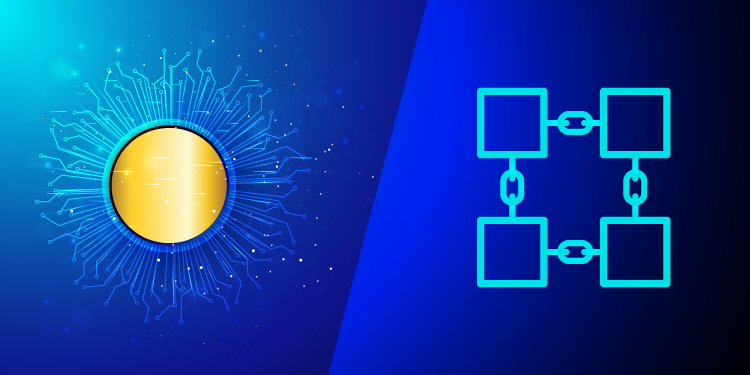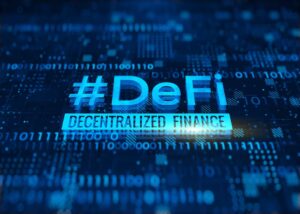
Stablecoins have played a vital role in volatile cryptocurrency markets, helping investors and traders minimize losses. JAX, one of the native tokens of the JaxNet protocol, performs the same function, but in an entirely different way. In our analysis of JAX coin versus stablecoins, we compare these approaches.
What is JAX?
JAX is a native token of the Jax.Network blockchain ecosystem. The coin is rewarded to miners as payment for mining on the shard chains of the network. These shard chains serve as the backbone of the network to ensure the network is secure and scalable at all times.
As opposed to other blockchains, Jax.Network does not create an asset-pegged stablecoin. The exchange rate of JAX will float according to the market forces of demand and supply. Ultimately, JAX coins are underwritten by the electricity cost that is necessary to create them. The relatively stable cost of the electricity creates a lower bound below which miners cannot print these coins. Therefore, the value of JAX coins will remain stable without pegging them on any basket of stable real-world assets.
JAX achieves stability by ensuring a proportionate reward for every miner based on the computing power they contribute to the entire network. There is an economic incentive for miners to mine the coin over shard chains, so mining JAX coins follow the law of supply and demand. As demand rises, miners will add more computing power to the network to increase their profit margin. Also, as demand falls, these miners will contribute less computing power to the network, stabilizing the value of JAX coins.
What are Stablecoins?
Stablecoins are unique crypto coins whose value/price is pegged to an external asset like a fiat currency or real-world commodities such as gold. The main aim of these stablecoins is to solve the problem of price volatility in the crypto market and help contribute to the DeFi boom.
The business establishment behind any stablecoin sets up a reserve to securely store the asset backing the stablecoin. For example, you can have $20 million held in a reserve bank as a backup to 20 million units of a USD-backed stablecoin. Today, most people turn to these stablecoins as a hedge during economic downturns like inflation and recession. These stablecoins are of different types, such as fiat-collateralized stablecoins, crypto-collateralized stablecoins, pegged to precious metals like gold, etc.
JAX vs. Stablecoins
Both JAX and stablecoins have one goal in the crypto market—ensuring value/price stability. However, our analysis of JAX coins versus stablecoins uses different approaches to achieve their goal. While stablecoins are pegged to a particular stable external asset(s), JAX coins are not pegged to anything, per se. In the table below, we outline the comparative features of JAX and other stablecoins.
| JAX | Stablecoins | |
| Purpose | Hedge against crypto price volatility. | Hedge against crypto price volatility. |
| Advantages | JAX can be used for payment. You will be able to use them to provide cross-shard liquidity and transform them into governance tokens. | Stablecoins are solely for digital payment. |
| Collateral Type | Not pegged, value is underwritten by the cost of electricity. | They are pegged to fiat, crypto, or precious metals. |
| Maximum Supply | The generation of JAX coins depends on the market forces of demand and supply. | The supply is proportional to the number of reserve assets. |
| Capital Allocation | ASIC-based. Miners contribute to coin creation through computing power. | Idle. High capital requirements to print them. |
Conclusion
The comparative analysis of JAX and stablecoins has the same goal: to bring stability to the crypto market and enhance the mass adoption of cryptos, especially for digital payment. Although their underlying technologies vary, they are doing a great job in tackling crypto-price volatility.
Source: https://api.follow.it/track-rss-story-click/v3/tHfgumto13DlIpmOZdxD1qgHTd9OkkKt
- 7
- Adoption
- All
- analysis
- asset
- Assets
- Backup
- Bank
- boom
- business
- capital
- Coin
- Coins
- Commodities
- computing
- computing power
- crypto
- Crypto Market
- cryptocurrency
- Cryptopolitan
- Currency
- Demand
- digital
- Economic
- ecosystem
- electricity
- etc
- exchange
- Features
- Fiat
- Fiat currency
- follow
- function
- Gold
- governance
- great
- High
- HTTPS
- Increase
- inflation
- Investors
- Job
- Law
- Liquidity
- Market
- Markets
- million
- Miners
- Mining
- network
- Other
- payment
- People
- power
- Precious Metals
- price
- Profit
- recession
- Requirements
- reserve bank
- So
- SOLVE
- Stability
- stablecoin
- Stablecoins
- store
- supply
- Technologies
- token
- Tokens
- Traders
- value
- Versus
- Volatility










